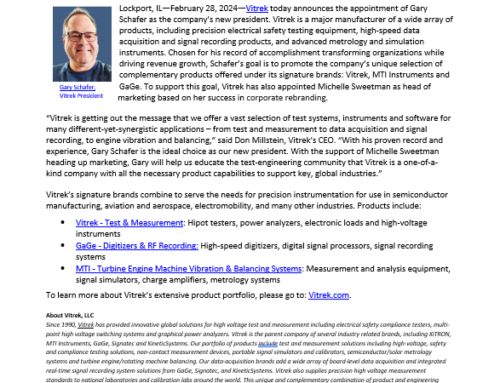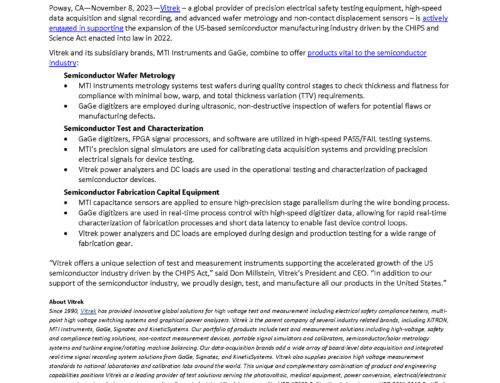The International Energy Agency predicts that as many as 125 million electric vehicles (EVs) will be on the road by 2030.  At the heart of these electric cars, trucks, and buses is the lithium-ion (Li-ion) battery, a type of rechargeable battery with high energy density and low self-discharge. The plates in Li-ion batteries consist of lithium compounds that are applied to either a copper plate substrate (cathode) or an aluminum substrate (anode). In turn, these two plates are separated by a dielectric separator.
At the heart of these electric cars, trucks, and buses is the lithium-ion (Li-ion) battery, a type of rechargeable battery with high energy density and low self-discharge. The plates in Li-ion batteries consist of lithium compounds that are applied to either a copper plate substrate (cathode) or an aluminum substrate (anode). In turn, these two plates are separated by a dielectric separator.
All of the layers in an EV battery are extremely thin. In fact, the cathode and anode plates are approximately 100 to 200 µm thick. The dielectric separator is also extremely thin, but it’s made from relatively inexpensive materials like polyethylene. By contrast, the cathode with its specialized construction is relatively expensive. Regardless, EV batteries comprise a significant portion of total EV cost, roughly 40% of the price of a 2018 Tesla Model 3 according to one source.
From Costs to Capacitance

Click to Enlarge
If the dielectric separator for a battery is scrapped, the cost of material waste isn’t especially significant. However, scrapping the entire EV battery because the plates are collectively too thick or too thin is costly. During EV battery production, the cathode plate, anode plate, and dielectric separator are calendared together. The resulting sandwich needs to fit inside a limited space. Given that thick electrodes help to maximize battery performance, a dielectric separator that’s too thick is especially undesirable.
In addition to the thickness of each plate, EV battery manufacturers require a high degree of accuracy. Today, the tolerance for a cathode plate or an anode plate is less than 10 microns. Yet manufacturers are now seeking accuracies of 1 micron. They’re also demanding greater precision for thickness measurements of the dielectric separator. Yet traditional methods of gauging can’t measure extremely thin EV battery plates and achieve the precision that’s required.
Fortunately, capacitance thickness gauging provides the solution. In basic terms, the electrical capacitance that’s formed between a capacitance probe and a target surface varies as a function of the distance (gap) between these two surfaces. Capacitive displacement sensors are known for precise measurements of electrically conductive materials but can also provide accurate thickness measurements of thin, non-conductive materials such as glass, sapphire, plastic, and polymers such as polyethylene for dielectric separators.
Two Methods for Capacitive Measurement
MTI’s Digital Accumeasure system uses capacitive probes and an amplifier to convert a highly reliable capacitive electric field measurement (displacement) into a highly precise 24-bit digital reading to measure thickness accurately. Importantly, this system provides a built-in capability to measure the thickness of insulating, or non-conductive, materials. Its direct conversion approach eliminates errors associated with traditional analog amplifiers in obtaining thickness or step measurements.
MTI’s capacitance probes emit an electric field that pass through the insulating material. The dielectric constant of this insulating material modifies that field. To measure thickness, the capacitive system must account for the different dielectric constants through a calibration routine with the material under test. As long as the dielectric constant doesn’t change, calibration remains consistent.
With the Digital Accumeasure, there are two ways to measure the thickness of battery plates (films) in EV batteries. The first method uses two single-ended probes if the substrate can be grounded and two push-pull probes if it cannot. The second method positions the battery plate/film on a roller and two probes are positioned to measure the film step height. An MTI application note, Two Ways to Measure Battery Plate Thickness, describes both methods.
About MTI Instruments
MTI Instruments of Albany, New York (USA) provides capacitance-based precision measurement solutions to the EV battery industry. Visit our website for more information and contact us with questions about the capacitance-based technologies described in this article.


